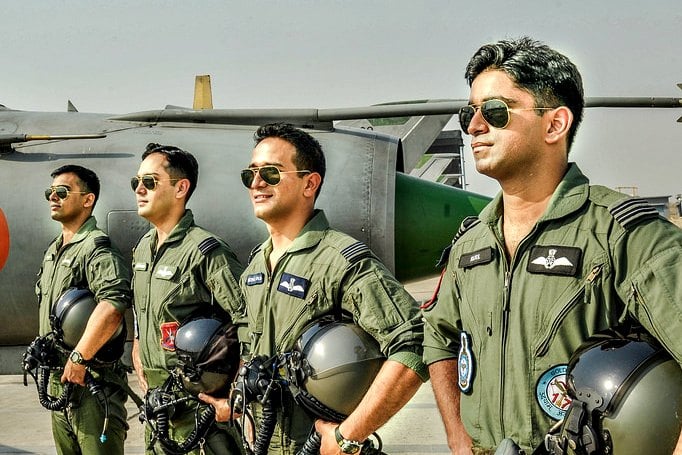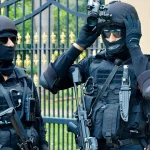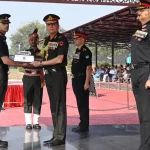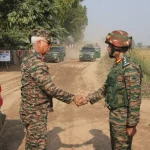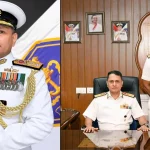To become a fighter pilot in the Indian Air Force (IAF) is a dream shared by many aspiring individuals, driven not just by the desire for adventure, but also by the sense of duty and honor in serving the nation. The journey to donning the pilot’s wings requires dedication, discipline, and a rigorous selection and training process. This article aims to provide comprehensive insights into how to become a fighter pilot in the IAF, detailing every step from eligibility criteria to training processes, along with the realities of a career as a fighter pilot.
Historical Context
The Indian Air Force has a rich and storied history, originating from the Royal Indian Air Force during World War II. Over the decades, it has played a crucial role in numerous conflicts and humanitarian missions, establishing India’s air supremacy and showcasing its technological advancements. Today, fighter pilots symbolize courage and resilience, tasked with safeguarding national airspace and performing complex air operations. As the IAF modernizes and expands, the demand for skilled and proficient fighter pilots continues to grow.
Pathways to Becoming a Fighter Pilot
To join the IAF as a fighter pilot, candidates can approach the selection process through several key routes:
1. National Defence Academy (NDA)
- Eligibility: Candidates must be male, aged between 16.5 to 19.5 years, holding a Class 12 certificate with Physics and Mathematics.
- Examination: Conducted by the Union Public Service Commission (UPSC), the NDA exam assesses knowledge through mathematics, general knowledge, and English.
2. Combined Defence Services (CDS)
- Eligibility: Graduates between the ages of 19 to 24 years can apply, with a background in Physics and Mathematics at the 10+2 level being advantageous.
- Examination: The UPSC conducts the CDS exam, which tests candidates on English, general knowledge, and mathematics.
3. Air Force Common Admission Test (AFCAT)
- Eligibility: Graduates aged between 20 to 24 years, with Physics and Mathematics in their Class 12 studies, can apply.
- Examination: Conducted biannually by the Indian Air Force, AFCAT evaluates candidates in English, Mathematics, and logical reasoning among other subjects.
Each entry route presents unique challenges, but they converge at the same rigorous selection process tailored to filter the most suitable candidates.
Selection Process
The selection process for aspiring fighter pilots is a multifaceted assessment that consists of:
1. Written Examinations
After successfully clearing the entry exams (NDA, CDS, or AFCAT), candidates must pass through intense written assessments. The AFCAT is highly competitive, with thousands of aspirants vying for a limited number of positions.
2. Services Selection Board (SSB) Interview
The SSB interview is a crucial part of the selection. Candidates undergo a five-day evaluation at one of the SSB centers. This interview includes:
- Psychological Tests: Assessing mental agility and personality traits relevant to military service.
- Group Tasks: Evaluating teamwork, leadership abilities, and interpersonal dynamics.
- Personal Interview: A direct interaction with officers focusing on personal history and motivations for joining the IAF.
3. Medical Examination
Candidates must meet strict physical and medical standards established by the IAF. This classification ensures that they are physically fit to handle the intense demands of flying high-performance aircraft. Common requirements include:
- Vision standards (such as 6/6 in one eye and 6/18 in the other).
- No history of severe medical ailments or surgeries that may hinder flying roles.
4. Pilot Aptitude Battery Test (PABT)
The PABT assesses candidates specifically for their potential as pilots. It tests cognitive functions, hand-eye coordination, and spatial awareness through various simulations and exercises designed to mimic the challenges faced during flight. Successful completion of this test is mandatory for all aspiring pilots.
Training Process
Upon selection, candidates proceed to the IAF’s prestigious Air Force Academy (AFA) in Hyderabad, where their intense training journey begins.
1. Initial Training
- Duration: Approximately 18 months.
- Focus: Military discipline, physical fitness, navigation, and basic combat skills.
- Activities: Rigorous physical training, classroom instruction on flying principles, and hands-on experience in simulators.
The focus during this period is on developing the foundational skills necessary for any Air Force officer, emphasizing teamwork and the IAF ethos.
2. Advanced Flying Training
After completing initial training, candidates specialize in flying:
- Duration: Varies based on aircraft type.
- Training Aircraft: Trainees start with elementary flying training on aircraft like the Pilatus PC-7 Mk II, progressing to advanced jets such as the Kiran and the Hawk.
- Focus Areas: Tactical maneuvers, advanced navigation, aerial combat tactics, mission planning, and emergency procedures.
This phase prepares candidates for the challenges of flying high-tech fighter jets and ensures they are combat-ready upon graduation.
Educational Qualifications
Educational qualifications play a pivotal role in eligibility:
- NDA Entry: Minimum qualification is completion of Class 12 with Physics and Mathematics.
- CDS and AFCAT Entry: Candidates must possess a graduate degree, and Physics and Mathematics at the Class 12 level are typically required for those opting for the flying branch.
Salary and Benefits
A career as a fighter pilot in the IAF is not only prestigious but offers competitive remuneration and a range of benefits:
- Initial Salary: As trainees, pilots receive a stipend of approximately ₹56,100 per month. Upon commissioning as a Flying Officer, the salary structure increases substantially, providing a basic pay starting at ₹56,100, plus entitlements such as:
- Military Service Pay (MSP) of ₹15,500
- A flying allowance of ₹25,000
Total Earnings: Including allowances, the starting salary can exceed ₹1,20,000 per month.
Annual Salary: The salary for fighter pilots typically ranges from ₹18,00,000 to ₹30,00,000 (about $21,500 to $35,800). These figures vary based on rank, deployment, and operational responsibilities.
Additional benefits include allowances for housing, children’s education, and special duty allowances, reflecting the respect and recognition accorded to those serving in the armed forces.
Case Studies and Real-World Applications
Real-life examples of fighter pilots in the IAF not only provide inspiration but also showcase the diverse challenges and scenarios pilots encounter. Notable figures such as Group Captain Abhinandan Varthaman, who played a significant role during the Balakot incident in 2019, highlight the valor and professionalism expected from IAF pilots. Such stories underscore the spirit of bravery, with pilots needing to make split-second decisions in high-pressure situations.
Challenges and Solutions
Despite the glamour of being a fighter pilot, the path is filled with challenges. Candidates must overcome intense competition and rigorous training demands.
- Challenge: High attrition rates during selection processes (PABT and SSB) can deter many who aspire to fly.
- Solution: Comprehensive preparation is essential; utilizing resources such as SSBCrack and SSBCrackExams can provide aspiring pilots with the necessary tools to succeed in both written and physical assessments.
Additionally, mental resilience is vital as pilots face stressful flight missions and unpredictable situations. Programs focused on mental health awareness within military structure can foster a supportive environment for sustaining pilots’ mental well-being.
Future Trends and Predictions
As technology evolves, the role of fighter pilots is also set to change. With the increasing incorporation of unmanned aerial vehicles (UAVs) and artificial intelligence in warfare, future pilots will need to adapt to new systems while retaining the core skills of traditional flying. The IAF is poised to remain at the forefront of aerial combat capabilities, demanding more from its personnel while also evolving its training methodologies.
Conclusion
Becoming a fighter pilot in the Indian Air Force represents an extraordinary journey filled with discipline, resilience, and courage. The multi-step selection processes and vigorous training at the Air Force Academy prepare candidates for the demanding yet rewarding life of a pilot. Beyond the thrill of flying, this career offers significant benefits, prestige, and the opportunity to serve one’s country with honor.
For those aspiring to embark on this remarkable journey, thorough preparation, both academically and physically, is crucial. Utilizing resources such as SSBCrack materials can greatly enhance the chances of success in this noble pursuit. The skies are waiting for the next generation of pilots to soar and protect the Indian airspace; the only question remains: are you ready to take to the skies?

